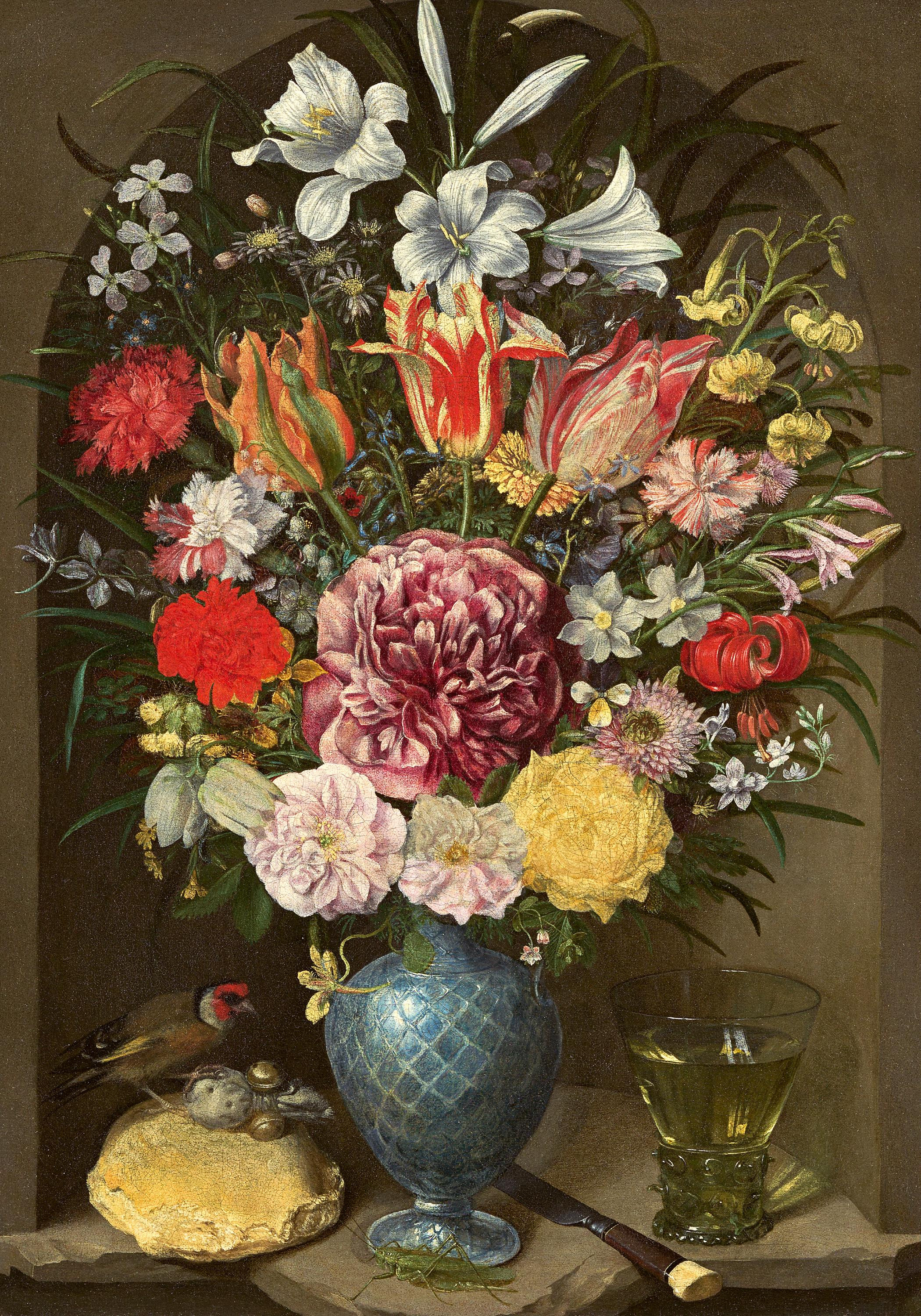FLEGEL, GEORG
1563 Olmütz - 1638 Frankfurt/Main
attributed
Title: Splendid Floral Still Life with Goldfinch and Grasshopper.
Technique: Oil on canvas.
Mounting: Relined.
Measurement: 63 x 45cm.
Frame: Framed.
The sale is based on a settlement agreement between the heiress of the deceased Dr Hermann Röchling and the heirs of Margarete Eisenmann.
Provenance:
Röchling Collection, Baden-Baden;
Galerie Neuse, Bremen;
Phillips Auction, London, 02nd December 1997, lot 64 (as Georg Flegel);
Dr Leyendecker Collection, Berlin;
forced sale at Auktionshaus Rudolph Lepke, Berlin, 19-20th June 1935 (as Flemish School, 17th century, signed and dated J.A.A. ... 1638);
Margarete Eisenmann, Berlin.
The life of the painter Georg Flegel, who is generally regarded as 'the first German still life painter', can only be reconstructed incompletely from a few sources: Georg Flegel was born in 1566 in Olomouc, Moravia, where he presumably already had contact with a member of the Dutch van Valckenborch dynasty of painters. It is assumed that he learnt the craft of painting from Lucas van Valckenborch in Linz, Austria, and moved to Frankfurt/Main with his master in 1593. Georg Flegel is documented in Frankfurt from 1594 until his death in 1638. In 1597, the year of Lucas van Valckenborch's death, his pupil was granted citizenship in Frankfurt and it is assumed that Flegel worked as an independent master from this point onwards. Georg Flegel achieved great fame and renown with his art and was much sought after by art lovers. In a memorable copperplate portrait of the painter, published shortly after his death, he is described as a 'second Apelles and Dürer', 'highly celebrated during his lifetime'.
In this painting, a round-arched niche is filled with a magnificent bouquet of flowers; the bouquet is so lush that the opaque blue glass vase decorated with diamonds has to stand on a bulge in the stone floor slab, which protrudes into the room like a trompe-l'oeil. Next to the vase in the narrow niche in the wall are: a little alarm clock on which a goldfinch and a small bundle are placed, a grasshopper, a knife and a glass filled with white wine. It is an ideal bouquet, skilfully composed. A wide variety of flowers are arranged here that do not bloom simultaneously in nature, and they are arranged in such a way that they radiate from the pink peony in the centre in a playful symmetry. Joris Hoefnagel introduced this form of radial bouquets in Frankfurt in the early 1590s and there are prints (1604) by Jan Th. De Bry from Frankfurt follows the same pattern.
The flawlessness of the bouquet's blossoms will only be short-lived; flower still lifes always harbour the idea of transience. In this context, bread and wine refer to the Eucharist, just as the goldfinch traditionally symbolises the suffering of Christ. Can the knife, whose handle is made of bone, be interpreted in a similar way? Because of its moulting, the grasshopper has also ascribed an analogy to Jesus' resurrection, or is the grasshopper just an insect that threatens the integrity of the flowers? Particularly interesting is the small bundle on which the goldfinch rests one leg, which is secured with little bells, like the original form of an 'alarm system'. The contents must be valuable - we can speculate: Is it gold, precious stones or perhaps particularly valuable plant seeds that will ensure the future survival of the floral splendour? Georg Flegel was able to overcome nature with his art and create flowers in the painting shown here that are still pleasing to the eye after 400 years, magnificently preserved.



